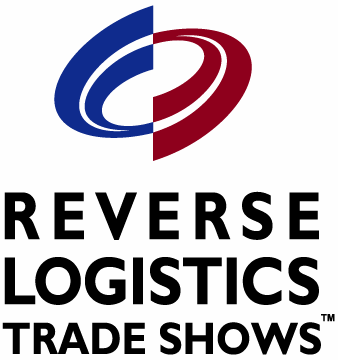Shippers No Longer Reactive When it Comes to Reverse Logistics
In today’s era of fickle e-commerce customers, reverse logistics represents an untapped opportunity for imaginative managers and their 3PL partners to plump up the bottom line.
Long overlooked by most global logistics and supply chain professionals, reverse logistics has emerged as a premium differentiator thanks to surging e-commerce demands. Furthermore, industry analysts maintain that shippers that fail to protect their brands with a circular strategy do so at their peril.
According to leading logistics real estate firms, e-commerce and returns pressures have been reshaping the global supply chain landscape in recent years. Location notwithstanding, shippers now must find the right amount of space at the right time to secure a sweet spot in the circular economy.
“Returns are an important part of the e-commerce ecosystem and are one reason why e-commerce generates three times the real estate demand vs. brick-and-mortar retailers,” says Melinda McLaughlin, vice president of research at Prologis, the world’s largest player in the logistics real estate arena. “In turn, this reality has contributed to very strong demand during this cycle, pushing vacancy to an all-time low and boosting competitive pricing power.”
McLaughlin says that logistics real estate rent growth remained considerable in 2018, with rents rising 6% globally. Consistent with the past several years, the United States outperformed, with 8% growth. Significantly, data contained in the firm’s “4th Annual Logistics Rent Index” shows that pricing is historically strong, with low vacancies translating to higher rental rates as shippers compete for available space.
These findings were mirrored in a similar report issued by the industrial real estate firm CBRE, which noted that warehouses have experienced exponential growth over the past seven years. “As part of this e-commerce push, reverse logistics is taking up to 700 million square feet nationally,” says Spencer Levy, CBRE’s chairman of research and senior economic advisor.
According to Walter Kemmsies, managing director, economist and chief strategist of JLL’s Port, Airport and Global Infrastructure group, e-commerce and logistics companies will continue to drive industrial real estate leasing as last-mile delivery become increasingly critical. “Keen operators will view total occupancy costs as encompassing not just rents, but also the cost of inventory, transportation and labor for last-mile deliveries,” he says.
Savvy occupiers, Kemmsies adds, will understand how the bricks and clicks fit together and will use data and analytics to determine whether and where they need physical storefronts versus fulfillment and distribution centers to handle the complete order fulfillment cycle. “They’ll begin to bring logistics managers into the real estate conversation in order to establish a holistic view of their supply chains.”
Harmonic convergence
XPO was among the key sponsors of the recently concluded Reverse Logistics Association (RLA) conference in Las Vegas where shippers heard from a variety of industry experts on how to monetize returned products through resale, recycling or disposal. A big focus this year was on how leading third-party logistics (3PLs) providers continue to move into reverse logistics as they attempt to keep stride with e-commerce incursion in the nation’s warehouse arena.
Erik Caldwell, XPO Logistics’ chief operating officer of supply chain in the Americas and Asia, notes that while in-store shoppers return about 8% of purchased goods, online shoppers send back nearly 30%. A recent consumer e-commerce behavior survey taken by XPO and conducted by independent research firm Goodmind also found that 86% of U.S. consumers believe an e-tailer’s return policy is among the most important considerations when deciding where to shop.
“The survey confirmed what we had suspected all along,” says Caldwell. “By using predictive analytics to forecast future returns and control costs, we can also protect brand integrity.”
Several academics were also calling for more productive relationships between shippers and 3PLs. “E-commerce companies and omni-channel retailers are increasingly outsourcing reverse logistics as a way to build brand loyalty,” says Kate Vitasek, a graduate and executive education faculty member at the University of Tennessee and author of several books on collaborative relationships.
In her RLA keynote presentation, Vitasek outlined why shippers should be “vested” with third parties to manage a seamless consumer experience, forecast future returns and control costs. “While we have seen shippers collaborate more closely in areas such as real estate and facilities management in the past, we’re now seeing more collaboration take place in the supply chain with 3PLs,” she says. “This is a natural progression, and one which should gain more traction as shippers realize that they must outsource beyond their core competencies to stay competitive in the reverse logistics marketplace.”
In a case study format, Vitasek explained how one huge U.S. multinational fine-tuned their reverse logistics operations by becoming vested with leading 3PLs. FedEx Supply Chain and its relationship with Dell is one compelling example of how these relationships come together. “As customary in the fast-paced high-tech industry, Dell operated under a procurement strategy of ‘every dollar, every year,’ meaning that it used frequent competitive bidding processes to drive down prices. By 2011, the honeymoon was over in the relationship,” she says.
Circular and sustainable
 The Reverse Logistics Association (RLA) titled this year’s annual conference “Cornerstone of the Circular Economy,” noting that a circular economy is an economic system aimed at minimizing waste and making the most of resources. This regenerative approach is in contrast to the traditional linear economy, which has a “take, make, dispose” model of production.
The Reverse Logistics Association (RLA) titled this year’s annual conference “Cornerstone of the Circular Economy,” noting that a circular economy is an economic system aimed at minimizing waste and making the most of resources. This regenerative approach is in contrast to the traditional linear economy, which has a “take, make, dispose” model of production.
And reverse logistics is gaining currency in financial settlement markets, too. One significant example of this was demonstrated when Accenture began collaborating with Mastercard, Amazon Web Services, Everledger and Mercy Corps in their launch of “the circular supply chain capability” last month.
According to spokesmen, this blockchain-based solution is designed to improve supply chain transparency by empowering consumers to directly reward sustainable practices of small-scale growers and suppliers.
“Our identity capabilities are already empowering millions of users around the globe to access essential services like healthcare, banking and travel,” says David Treat, a managing director and global blockchain lead at Accenture. “Our circular supply chain concept combines these capabilities with blockchain and expands its application to places and things which is allowing us to rethink global supply chains. Through effective public and private partnerships, we can place sustainability and customer empowerment at the heart of global business models.”
Digital identity is a critical enabler of the offering. Through each producer’s unique digital identifier, data about the “first mile” of their goods is established and linked to their products as they move through the supply chain. End consumers, through a simple scan of a label, can access details of the product and can be empowered to direct a secure “tip” to that producer.
At that time, Dell was driving for lowest cost, but FedEx Supply Chain believed Dell’s short-term thinking was putting capabilities at risk. A major tension point was that Dell wanted FedEx Supply Chain to drive proactive innovations and assume the cost of investments. FedEx resisted because it had no guarantee of return on investment within the existing contract structure and constantly faced hard-driving cost reductions.
“It was clear that neither party was content with the current contract,” says Vitasek. “The existing contract structure and relationship dynamics placed a wedge in the trust level between the two companies, and they realized a better way was needed.”
After many internal discussions, and later talks with FedEx Supply Chain, the parties decided that the relationship was a good testing ground to try for the vested model—a methodology that works to attain win-win outcomes for both parties based on agreed upon goals and objectives.
Dell and FedEx Supply Chain have since been successfully operating under a vested model since 2012 when their new agreement took effect. Fast-forward six years, as the parties went through a refresh to update their agreement to address lessons learned and changing business environment.
Vitasek allows that many thought vesting would be a fad, or that the results would not be sustainable. But because the model is anchored in a flexible contracting framework, it can allow the parties to continually align their interests. “The relationship has successfully navigated both Dell and FedEx Supply Chain through not only transforming how they work, but navigating the changes needed to drive transformation in their reverse logistics operations,” she says.
Coming full circle
Finally, it appears that online retailers are coming to terms with the high return volume that comes with online shopping, while reducing the cost associated with those returns remains a top priority.
Tony Sciarrotta, executive director of the RLA, says that the compression in the warehouse and industrial real estate sectors reflects the ongoing demands created by e-commerce. “And this trend will only become more intense,” he says. “That’s why it’s so vital for shippers to collaborate with a variety of third parties in the circular economy.” According to Sciarrotta, a new challenge has been set in the reverse logistics space as retailers come up to speed to match the strides already made by manufacturers.
Based on the present growth rate for returns, by 2027 customers will return nearly $1 trillion in merchandise annually, with much of it going back to stores and distribution centers operated by retailers, wholesalers and manufacturers. At the current rate of returns, RLA economists estimate that e-commerce returns will be twice the $336 billion in brick-and-mortar returns, representing $634 billion by 2023.
Currently, nearly half of all returns cannot be resold at their full retail price. As a consequence, the original seller loses margin on the additional transportation and handling costs associated with getting merchandise back while also losing more margin on the resale.
“But it’s especially gratifying to see that even Amazon and E-Bay have seized control of their destinies by satisfying consumer demand in the entire cycle,” adds Sciarrotta. “There’s no one silver bullet solution for logistics managers today, but that’s a good thing, too. It means they have more options than ever.” •

Article Topics
3PL News & Resources
LM Podcast Series: Assessing the freight transportation and logistics markets with Tom Nightingale, AFS Logistics Investor expectations continue to influence supply chain decision-making XPO opens up three new services acquired through auction of Yellow’s properties and assets FTR’s Trucking Conditions Index weakens, due to fuel price gains LM Podcast Series: Examining the freight railroad and intermodal markets with Tony Hatch Supply Chain Stability Index sees ‘Tremendous Improvement’ in 2023 TD Cowen/AFS Freight presents mixed readings for parcel, LTL, and truckload revenues and rates More 3PLLatest in Logistics
LM Podcast Series: Assessing the freight transportation and logistics markets with Tom Nightingale, AFS Logistics Investor expectations continue to influence supply chain decision-making The Next Big Steps in Supply Chain Digitalization Warehouse/DC Automation & Technology: Time to gain a competitive advantage The Ultimate WMS Checklist: Find the Perfect Fit Under-21 driver pilot program a bust with fleets as FMCSA seeks changes Diesel back over $4 a gallon; Mideast tensions, other worries cited More LogisticsAbout the Author
Subscribe to Logistics Management Magazine

Find out what the world's most innovative companies are doing to improve productivity in their plants and distribution centers.
Start your FREE subscription today.
April 2023 Logistics Management

Latest Resources
















